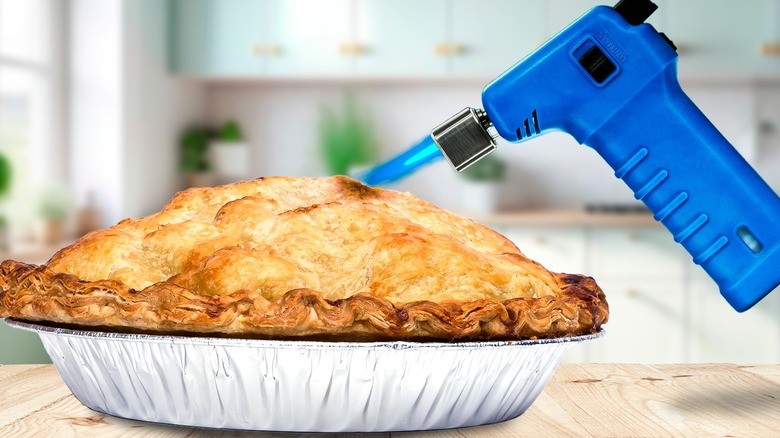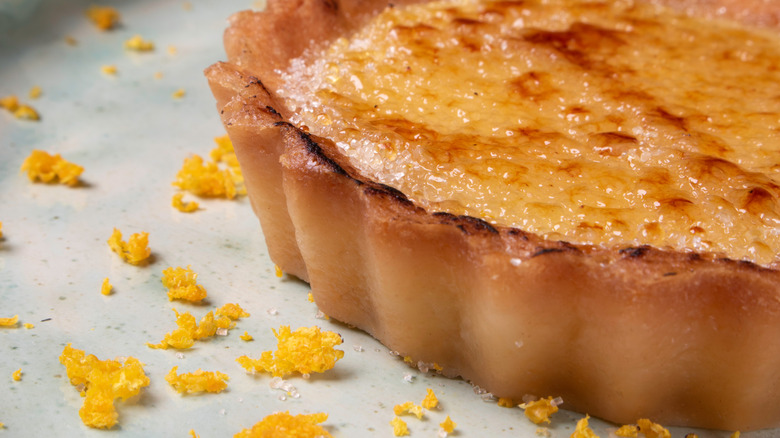Brûlée Your Pie Top For An Aesthetically Pleasing Finish
You're making a pie for your next gathering, and you want it to be a show-stopper that looks just as incredible as it tastes. There are many ways to give pie a decorative twist, from lattice work to cutting intricate embellishments out of extra pie dough. But what if you don't want added crust throwing off your filling-to-crust ratio, or what if you simply haven't mastered pie dough quite yet? Fortunately, there's an easy solution: Brûlée the top of that pie, and you'll have a photo-worthy dessert that your guests won't be able to resist. Plus, since all you need for this trick is a sprinkle of sugar (and a bit of heat), you won't need to make any pesky last-minute trips to the grocery store.
To achieve this trick, simply add a thin layer of sugar to the surface of your pie and apply heat from your blowtorch until the sugar melts into a golden-brown sheet of caramelized magic. That's right, this tip isn't just for aesthetic purposes — that added bit of torched sugar will provide the perfect textural contrast to the flaky pie dough and creamy interior.
If you're not much of a baker, don't worry; you can use this trick to level up store-bought pies, too. Since sugar itself doesn't have a particularly strong flavor, it'll work perfectly with whatever kind of pie you want to elevate.
Tips for a picture-perfect brûlée
For this trick, a handheld blowtorch will give you the best results. The reason it's the go-to for actual crème brûlée is because it allows for precision — how and where you apply the heat is up to you. If you don't have a blowtorch, follow Ina Garten's advice and use the broiler function on your oven. Just be mindful that the sugar will burn quite quickly, so keep an eye on it. You may also want to move your brûlée'd treat around in the oven to ensure even caramelization.
Whatever method you use, we have a few universal tips for picture-perfect results. Prior to sprinkling on the sugar, blot up any moisture pooling on the pie's surface, as this will help the sugar adhere. Make sure you're using the right amount, too — if you pour on too much, it'll create an impenetrable barrier, but too little will look uneven. If you have an offset spatula, consider spreading the layer of sugar around the pie's surface until it's as even as possible.
Here's one final tip: While any sugar will technically caramelize to some degree, for the best and most consistent results, spring for regular granulated sugar. Once you've mastered the technique, you may want to start adding this brûlée topping to everything from crêpes to a super simple three-ingredient crème brûlée.

